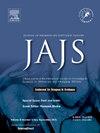治疗复发性肩关节脱位的拉塔杰特手术与游离髂骨移植的比较研究
Q4 Medicine
引用次数: 0
摘要
最常见的肩关节脱位是复发性前外伤型。Latarjet 和 Eden Hybinette 是重建伴有明显骨缺损的肩关节脱位的两种竞争性技术。 目的是通过比较Latarjet和Eden Hybinette技术,评估治疗复发性肩关节脱位伴骨缺损的功能效果。 一项前瞻性随机对照试验在四十名肩关节复发性脱位的成年患者中进行。试验采用随机方法分为两组(共四十名患者;二十名髂骨移植病例和二十名 Latarjet 对照组)。我们对两组患者进行了比较;临床评估在术前和术后至少一年完成,采用改良 Rowe 评分法,包括疼痛程度、稳定性、活动度损失和功能限制。满意的结果包括优秀和良好的结果,不满意的结果包括一般和较差的结果。前瞻性地记录了不良事件。术前、术后即刻和最后随访时,均进行了 CT 检查以评估放射结果。 除了 Latarjet 组在最终随访时活动范围(ROM)(外旋和内旋)更受限制(P < 0.05)外,两组在临床和放射学方面均无明显差异(P > 0.05)。Latarjet组中有一例因曲马多合用而复发脱位。每组中均有两例仅有前部忧虑。据报道,10%的髂骨组患者出现供体部位感觉障碍。计算机断层扫描显示,髂骨组的移植物体积更大。 Latarjet组和Eden Hybinette组均可作为重建手术,用于恢复肩关节脱位伴有的严重骨缺损;除了Latarjet组的外旋和内旋运动更受限制外,两组并无明显差异。本文章由计算机程序翻译,如有差异,请以英文原文为准。
Comparative Study Between Latarjet Procedure Versus Free Iliac Graft in the Management of Recurrent Shoulder Dislocation
The most common form of shoulder dislocation is the recurrent anterior traumatic type. Latarjet and Eden Hybinette are the two competing techniques in reconstructing significant bone loss accompanying this type.
The aim is to evaluate the functional results in the management of recurrent shoulder dislocation with bone loss by comparing Latarjet and Eden Hybinette techniques.
A prospective, randomized controlled trial was performed on forty adult patients suffering from recurrent shoulder dislocations. Two groups (a total of forty patients; twenty iliac graft cases and twenty Latarjet controls) were performed in a randomized method. We compared the two groups; clinical evaluation was completed before surgery and at least 1 year postoperatively, by using the modified Rowe score which consists of pain level, stability, motion loss, and limitation of function. Satisfactory results included excellent and good results, while unsatisfactory results included fair and poor results. Adverse events were prospectively recorded. CT studies were performed to assess the radiographic result preoperatively, immediately-postoperatively, and at final follow-up visits.
Both groups did not differ significantly in either the clinical or the radiological aspects (P > 0.05) except for more limited range of motion (ROM) (external and internal rotation) in the Latarjet group at the final follow-up (P < 0.05). One case in the Latarjet group had recurrent dislocation due to tramadol fits. Two cases in each group had anterior apprehension only. Donor-site sensory disturbances were reported in 10% of the iliac group patients. Computed tomography revealed a larger graft size in the iliac group.
Both Latarjet and Eden Hybinette can be used as reconstructive surgeries in restoring critical bone loss accompanying shoulder dislocations; they did not show significant differences except for the more limited external and internal rotation motions in the Latarjet group.
求助全文
通过发布文献求助,成功后即可免费获取论文全文。
去求助
来源期刊

Journal of Arthroscopy and Joint Surgery
Medicine-Orthopedics and Sports Medicine
CiteScore
0.60
自引率
0.00%
发文量
1
期刊介绍:
Journal of Arthroscopy and Joint Surgery (JAJS) is committed to bring forth scientific manuscripts in the form of original research articles, current concept reviews, meta-analyses, case reports and letters to the editor. The focus of the Journal is to present wide-ranging, multi-disciplinary perspectives on the problems of the joints that are amenable with Arthroscopy and Arthroplasty. Though Arthroscopy and Arthroplasty entail surgical procedures, the Journal shall not restrict itself to these purely surgical procedures and will also encompass pharmacological, rehabilitative and physical measures that can prevent or postpone the execution of a surgical procedure. The Journal will also publish scientific research related to tissues other than joints that would ultimately have an effect on the joint function.
 求助内容:
求助内容: 应助结果提醒方式:
应助结果提醒方式:


